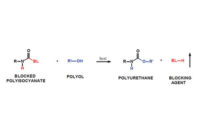 Q: Sustainability is a subject that is often raised by potential customers. How should we target new product development or promote existing products to demonstrate that we are addressing their concerns?
Q: Sustainability is a subject that is often raised by potential customers. How should we target new product development or promote existing products to demonstrate that we are addressing their concerns?
Sustainability has moved from a special product attribute to one that is part of everyday business—and a key issue when considering new product developments and how they can be promoted. It is also a topic that means different things to different people. For some audiences, volatile organic compound (VOC) issues may be a priority, while others may focus on bio-based or renewable content. Still other audiences may want to examine the environmental footprint or long-term durability of a product. Even this short list indicates that sustainability is an issue with diversity.
In the planning stages of a development program, adhesive manufacturers decide on the basic technology used to address a problem (e.g., solvent-based, waterborne, 100% solids). They also have the flexibility to select the base polymer and the formulating ingredients that will be the core of the finished product. At this point, a choice can be made to focus their development with a “greener” raw material rather than a traditionally used product. A high-performing finished adhesive with a “greener” pedigree may have a competitive advantage in the market for some customers. An improvement in sustainability may be defined in a number of ways, depending on the adhesive.
The goal to reduce VOCs has been an early driver for improving sustainability and has led to the development of 100% solids and waterborne adhesive systems. Technology improvements of this type are well-established for polyurethanes. As dispersion know-how has evolved, advancements have made waterborne polyurethane adhesives even more attractive from a sustainability standpoint. Many dispersions originally contained co-solvents (e.g., NMP), but technology has progressed to the point that co-solvent-free products are widely available. In spite of this major improvement, further reductions in VOCs can be achieved. Dispersions that are carboxylate-stabilized may still have a small VOC content because of the volatile amines used as counter-ions. However, VOC-free dispersions that use sulfonate salts as hydrophilic groups are commercially available.
One- and two-component 100%-solids polyurethane adhesives were developed for structural adhesive applications in the automotive and construction industries. One-component moisture-curing polyurethane adhesives enable the production of engineered wood for load-bearing structural beams. In addition, these polyurethane adhesives avoid the formaldehyde component present in competitive adhesives. For flexible packaging, two-component solvent-free polyurethanes have emerged as the low-cost, high-performance adhesive technology of choice.
In some regions of the world, government regulations with the goal of driving sustainability are promoting the use of isocyanates with low monomer content. The polyurethane industry is addressing these concerns by introducing modified isocyanates with a monomer content of <0.1%. These low levels are obtained through process engineering (monomer stripping) or formulation techniques.
Polychloroprene contact adhesives are still solvent based for many applications (e.g., construction), but waterborne polychloroprenes now comprise a significant portion of the polychloroprene adhesive market. Waterborne polychloroprenes can be formulated for general purpose and DIY contact adhesive applications. The largest application for waterborne polychloroprenes is in the foam bonding market. Their use has led to a significant sustainability improvement by replacing the previously used solvent-based SBR adhesives. As is the case for polyurethane dispersions, the technology of polychloroprene latexes has continued to improve and products are now available with a chloroprene monomer content in the ppm level.
Bio-based raw materials are a high priority for some adhesive applications. Polyols based on natural products, such as castor and soybean oil, have been available for many years. Bio-based production of butanediol and succinic acid has been demonstrated, and plans for commercial production plants were recently announced.
Sustainability is an evolving subject, but the commercially available adhesive technology reviewed here can be a starting point for developing new products with a “greener” focus.
For additional information on the topics addressed or to ask another question, email jeff.dormish@bayer.com with the subject line “Polyurethane Q&A.”







